F-35 soars when it comes to stealth and sensors
Friday, 22 February, 2013
It has taken over 10 years and $60 billion, but Lockheed Martin’s F-35 Lightning II aircraft is edging closer towards becoming a reality. The fifth-generation military aeroplane is currently being promoted on a five-week tour of Australia that will culminate at the Avalon Airshow. The tour includes a mobile flight demonstrator that showcases the actual size and operation of the plane’s cockpit.
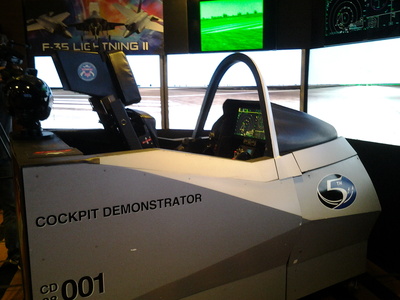
Speaking on the Sydney leg of the tour on 15 February, Dave Scott, Director of F-35 Customer Engagement for Lockheed Martin, explained that the aircraft has been developed to cover both current and emerging threats for which existing models - the F-15s, F-16s and F-18s - would not suffice. So in 2001, the US and eight partner nations, including Australia, joined together to develop the F-35 program, a new type of aeroplane that was based around stealth.
Australia has contributed $125 million for the development phase of the project and will be adding another $70 million when we buy planes in the production phase, which should be delivered in about a year. Meanwhile, Lockheed Martin has 78 contracts totalling $300 million with 26 Australian companies who are providing components - as the project progresses into the build process, this will grow to $5-6 billion.
There will be nearly 4000 F-35s built for the US and internationally across three different variants - normal take-off, vertical take-off and carrier-based. The plane has one engine and cockpit, with Scott saying only one pilot is needed to fly the plane because of its advanced electronics systems. Furthermore, data links will allow groups of aeroplanes to fight cooperatively, exchanging information back and forth and being “much more integrated than in any current generation aeroplane”.
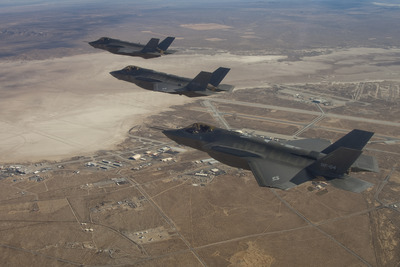
“Capability is built around software,” said Scott. “We have about 9.4 million lines of code in this aeroplane, which is about four times larger than fourth-generation aeroplanes.”
Explaining the electronic features in detail was Elliot Clemence, who has been a test pilot since 2003. He said the three main things pilots like about the plane are its sensor fusion, stealth, and electronic attack and electronic protection.
Sensor fusion is important because it reduces a pilot’s workload in a high-threat environment, where the pilot has to be focused at all times. “Think of it as if you’re driving along and you’re texting on your phone, and you’re turning the radio down, and you’re programming the GPS - are you really driving? No, you’re worried about all those other tasks,” said Clemence.
“Sensor fusion simplifies all those tasks in the cockpit. It takes all the information from the sensors and automatically combines it into a coherent, common operating picture for the pilot. So he doesn’t have to cue his sensors; so he doesn’t have to go search for information somewhere; so he doesn’t have to do those texting-type tasks that really distract.
“And if it’s missing a piece of data that it needs, like threat identification, it will task a certain sensor automatically to go get that piece of information.”
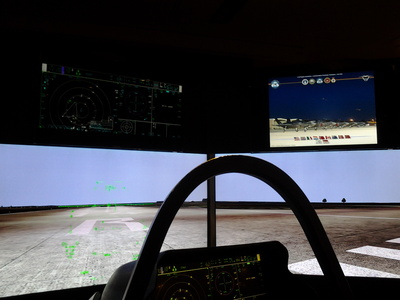
The stealth of the aeroplane comes down to the design of its body, each part of which is intended to avoid radar detection. So the fuel and weapons tanks are internal, the engine is at the back of the plane and the antennas have been embedded into the craft. Furthermore, the plane’s own radar operates in special modes that enable it to avoid detection.
This stealth allows the F-35 to get closer to the threat, which allows it to employ its electronic attack (ie, radar jamming) and electronic protection.
“We’re dealing with who can see who first and who can shoot who first,” said Clemence. “If you have a good jamming platform, then you can blind the other guy. If you have good electronic protection, that means you can prevent him from blinding you, which means you can see him first and get your missiles off first.
“That is where the F-35 really shines.”
Unlike other planes, the F-35 does not have a fixed heads-up display (HUD) containing its flight information - rather, the pilot wears a helmet which projects a virtual heads-up display into its visor. The HUD is linked to the plane’s distributed aperture system - six electro-optical infrared sensors placed around the aeroplane.
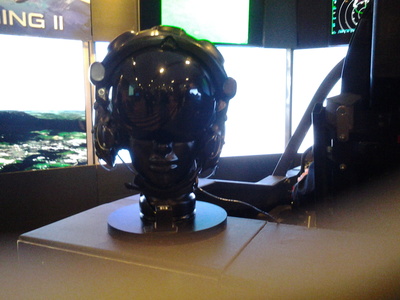
“The data from these sensors are stitched together to give the pilot a 360° spherical image of the outside world. No other aeroplane has that,” said Clemence. He added that not only does this give the plane an advantage when it comes to missile and aircraft detection, but video can be pumped into the visor to allow the pilot to see the outside world.
“We’ve done recent testing where the test pilot actually put a vision-restrictive device over his visor, so he couldn’t optically see the outside world, but he had the sensor information pumped into his visor and he was able to virtually see the outside world,” said Clemence.
“We can basically make the night into day and see in other spectrums.”
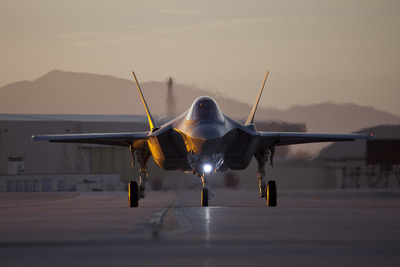
The cockpit is designed to be intuitive, with a touch screen and voice activation to control simple functions like temperature, so the pilot doesn’t need to be reaching around for different switches. Clemence said it is the simplest cockpit he has ever been in.
“It seems pretty bare, but that’s because all the functions are pretty much on the glass,” he said.
“For somebody who is used to knobs and switches and old avionics, it takes a little bit of getting used to. But after a couple of flights, you start building cockpit efficiency and you really start to enjoy it.”
One certainly does not need to be a computer genius to operate the systems, with Clemence saying that though he is not computer-savvy, he can operate the plane “because it is designed to be that easy”.
Indeed, when attendees of the event were given the opportunity to ‘fly’ in the cockpit demonstrator, we found out what Clemence meant. The screen in front of us displayed information such as altitude, air speed, distance from potential targets and more. With just a few directions from Lockheed Martin staff about which buttons to press and which way to direct the control stick, we were able to take off, land and even shoot down targets.
Scott admitted that it will be a while before the project is completed, with development testing set to conclude in late 2016 and US services still to conduct their own operational tests after that. But Lockheed Martin is clearly confident about the F-35, with Scott saying the plane is “essential for future security and for future deterrence”, especially in the midsts of a shift in the capabilities of fighter fleets around the world.
“This is the move from VCRs to DVDs,” he said. “You do not want to be left buying the last VCR.”
Avoiding EMC issues: simple tests you can do yourself
This is a brief overview of EMC compliance with some practical tips on not getting caught out.
Electric dump valves help oil and gas company reduce emissions
Oil and gas company Laramie Energy deployed ASCO zero-emissions electric dump valves to comply...
Australia's largest electronics expo returns to Sydney
Electronex, the annual electronics design and assembly expo, will return to Sydney on 19–20...





